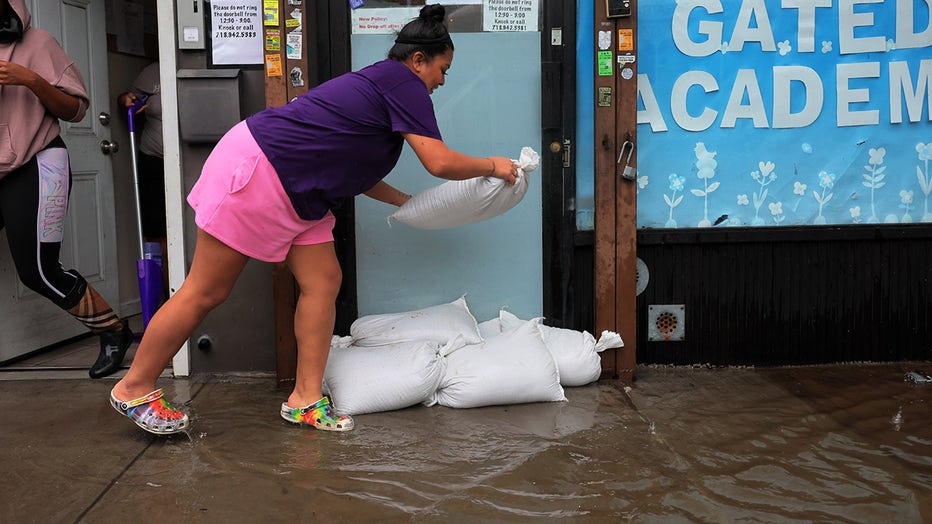NYC unveils new pavement to mitigate flooding
NYC unveils new pavement to fight flooding
New York City is installing porous pavement along several road sin Brooklyn as part of a new flood prevention tactic. The hope is the pavement will help drain water and reduce pressure on the city's sewer system. FOX 5 NY's Duarte Geraldino has the story.
NEW YORK - New York City is testing out a new flood prevention tactic in Brooklyn.
Department of Environmental Protection officials say they have already begun installing a stretch of porous pavement along several roads near 37th Street and 12th Avenue in Borough Park.
The goal is to reduce pressure in the sewer system and prevent stormwater from inundating neighborhoods.
Last fall, parts of Brooklyn were pushed to the limit when floodwater deluged the borough.
Brooklyn flooding snarls traffic, trains
Flooding in the Windsor Terrace area of Brooklyn continued Friday afternoon, FOX 5 NY's Linda Schmidt reports. Meanwhile, a state of emergency has been declared for the city with more rain expected.
Stormwater was seen pouring into subway stations and basements, and reaching the top of cars' wheels in parts of Brooklyn and elsewhere.
While the city is working to expand the sewage system capacity, officials say there's not that much room left.
"These surfaces do not let water infiltrate into the soil, which is the way Mother Nature handles rainfall," DEP Commissioner Rohit T. Aggarwala said Monday.

Workers of G.A.T.E.D Academy unload sandbags to stop flooding amid a coastal storm on September 29, 2023 in the Flatbush neighborhood of Brooklyn borough New York City. (Photo by Michael M. Santiago/Getty Images)
He says the city will spend $35 million over the course of the year to install seven miles of porous concrete in Sunset Park, Kensington, and Borough Park.
Our modeling shows that this porous pavement will keep 35,000,000 gallons of stormwater out of the sewers each year," Aggarwala says.
Our modeling shows that this porous pavement.
Will keep 35,000,000 gallons of stormwater out of the sewers each.
NYC porous pavement
How does it work?
They first remove asphalt in the parking lane, two feet of the material underneath is taken out and back-filled with stone that allows water to flow into the ground.
Then they top it with four-foot wide porous concrete panels.
Unlike regular concrete, there are void spaces that allow water to go directly through.
The end goal is to ensure the city can withstand future storms, which many leaders believe are only going to get worse.

